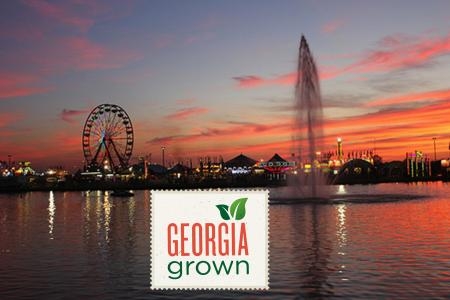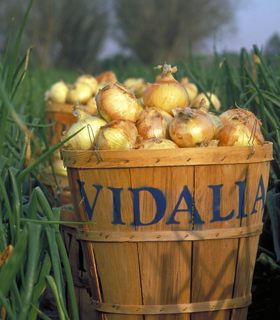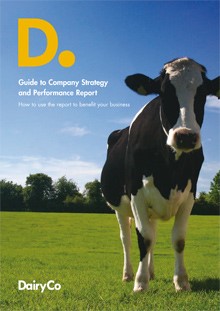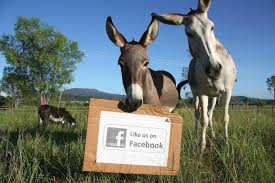The Georgia Department of Agriculture is not a part of the USDA. According to their web site, they are the oldest state department of agriculture in the Unites States. It was established in the year of 1874. They help regulate and promote agricultural ideas. They also try to ensure food safety throughout the state. This is achieved by supporting local places of agricultural commission, which consists of grocery and convenient stores, food processing plants, seeders, and several more. For example they provide information of local farmers markets. The information contains the locations and times of sale. Without this department’s help, Georgia’s agriculture would be lost. Our farm would be left in chaos as well as many others. I appreciate the work that they do for our state and every Georgian should too.

Tag Archives: Agriculture
“Life of a Southern Farmer: Pecans”
Georgia’s pecans are known to be the best in the nation. According to Georgia Pecans, “There are over 500 varieties of pecans, of which only three are common: Georgia produces all three varieties and leads the nation in pecan production, averaging 88 million pounds each year.” They add a rich flavor and hint of crunchiness to every dish they come into contact with. I personally, do not like pecans.

However, the rest of my family adores them. My grandmother has a pecan tree in her back yard, and when fall rolls around she makes all of us grandchildren pick up the fallen pecans. She can begin to make her world famous pies.
“Life of a Southern Farmer: Sunflower Farm Festival”
Wes Holt never expected his uncle’s sunflowers to bring travelers from all over the world to his property. They were originally planted just to attract doves for the hunting season. His property shortly became a tourist attraction. Now, Rutledge, Georgia hosts an annual Sunflower Farm Festival. Here the neighboring people build art to be put in the flower fields. Its attendees are allowed to roam the fifteen acre farm at their leisure. According to Judy Garrison, the Holt family opens up their farm “for only 30 days (June 15-July 15) each year, when blooms are at their most statuesque height (Deep South Magazine, 2013).” I always enjoyed sunflowers as a child. Their tall and limp behavior astonishes me. I encourage everyone to try and attend this festival. It is an inexpensive, easy way to have a little fun.
http://deepsouthmag.com/2013/06/georgia-sunflower-farm-festival/
http://gocovington.com/wp-content/uploads/2013/05/Sunflower-Farm.jpg
“Life of a Southern Farmer: Bees”
When people think of agriculture, bees may be the very last thing that comes to mind. However, bees are very important in the state of Georgia. According to the Georgia Department of Agriculture, about one third of our food is directly related to the pollination of insects, one hundred of these crops being pollinated by bees (Georgia Department of Agriculture, 2014). Most southern bee keepers do not make a living off of their bee hives. They tend to only obtain a few for various reasons. If a bee farmer wants to sell his or her honey, they do not have to have a license to sell in their farmers markets, fairs, own homes, and own businesses. Yet, they must be producing in a sanitary environment. Honey bees can be found in the flowers around my house.
http://agr.georgia.gov/honey-bees.aspx
http://en.wikipedia.org/wiki/File:Honeybee_landing_on_milkthistle02.jpg
“Life of a Southern Farmer: Onions”
When one thinks of onions they don’t get a sweet taste in their mouth, or do they? According to Bobby Flay, the Vidalia onion is not only the most famous but also the only onion there is (Vidalia Onions, 2014). However, this is knowingly not true, but these onions are one of the few that are actually sweet in flavor. They are grown in Vidalia, Georgia, which is about

an hour and a half from my house. I have played many of softball tournaments here in the onion town. It is extremely hot as well as humid, like most of the state. What set it apart from most towns are its well-known onions and its abundance of annoying gnats. For some reason, its yellow granex hybrid seed, planted anywhere else in the world, does not produce onions as sweet as the Vidalia. Georgia’s vast amount of rainfall causes our soil to contain a lot of sulfur, which makes our onions so sweet. This is what makes our onions so popular in addition to unique.
“Life of a Southern Farmer: PR in Agriculture”
The practice of spreading or managing information is known as public relations. Public relations help companies and organizations spread their knowledge. Many use public relations to help sell products. Depending on how it is used, this aspect can be both good and bad. If public relations are used in a

positive targeted manner, then it can achieve great progress. However, if public relations (PR) do not target a certain audience and seem like negative spamming, then using this tactic can appear pointless. It is important for Farmers to spread their word or message. That is why PR is crucial to agriculture by providing farmers with a voice, but only if it is applied correctly.
When targeting an audience, one should base their information broadly. If it is too specific, then it will only affect a very small group of people. That is not what companies want to accomplish. They want to achieve a high rate of sales. The only way to complete this task is to aim for distinct groups of people. According to Meltwater, the grouping method is best when trying to express “messages in the most meaningful way (Meltwater, 2014).” This ensures that their audience is not too explicit, but direct.
Another aspect of PR is catching the reader’s eye or attention. If professionals fail to perform this task, then they are failing to do their job. In their advertisements they must provide color and excitement. If not, they become boring in addition to repetitive. PR requires a clear call to action, a direct statement of benefits, and a great headline, states MoreBusiness.com. All of these attributes help interest readers. They are able to comprehend information easily. In turn, perceiving a product or concept more accessible.
PR has to make sure their audiences do not feel as if they are being spammed. If they start to sense this, they may feel claustrophobic. Suffocating customers is the last thing PR professionals want to experience. Cision communicates to enterprises that, “this can make you, or your organization, look unprofessional and clueless. It can alienate the affections of your target audience (Cision, 2014).” Thus, proving that smothering is not the answer to spreading ones voice. It does quite the opposite.
Small Farm Central is one of the most well-known agricultural blogs in the nation. It explains that public relations, “tell the farm story every day to all stakeholders and make sure employees can tell the story as well (Small Farm Central, 2007).” Bad PR fails to accomplish this as well as to target a group audience, to catch a reader’s attention, and to not use spam on its perspectives. Each business should strive to be great in all of these aspects, because it is what good PR looks like.
http://www.meltwater.com/solutions/pr-solutions/pr-campaign http://www.morebusiness.com/ad-copy-that-sells http://www.cision.com/us/2014/07/5-tips-to-avoid-spamming-your-target-audiences/ http://www.smallfarmcentral.com/blog/sep/2007/adjective-laden-food-and-contradictions-farming
“Life of a Southern Farmer: Steps to Raising Cattle Part Four”
The next step to raising cattle is the auction phase. This is where cattle are bought and sold. They occur in various places. The auction that my dad and I used to reguarly attend was located in Hawkinsville, Georgia. This particular auction occured weekly, and the owners were apart of both the Georgia Livestock Marketing Association and the Georgia Cattlemen’s Association. Many small auctions just like this are dispersed throughout the state. They are mainly for small farmers who take their yearlings to be bought by western farmers. They then take them to huge feeding plots which rolls into step five. According to Explore Beef, “about 1/3 of cows stay on the farm for breeding purposes.” This gives East Coast farmers means to start the entire process over again.
http://www.explorebeef.org/raisingbeef.aspx
http://www.encyclopediaofalabama.org/face/Multimedia.jsp?id=m-2461
“Life of a Southern Farmer: Steps to Raising Cattle Part Three”
The third progression to cattle raising takes the longest amount of time. This step is typically called “Stokers and Backgrounders,” states Explore Beef. The process consists of young cows solely grazing in pastures and developing. It can take several months to undergo. Depending on what breed, reaching full maturity spans from two to three years. It is, however, one of the simpler phases for farmers. They do not have to put in much effort besides feeding and providing water. Sitting back and waiting can be extremely boring, but it is intricate to peruse in raising cattle. While growing up on a cattle farm, my father used to let my sister and I name as well as play with the cattle enduring this growth process. I remember being so excited to pet them as well as to have their sandpaper-like tongues brush up against my face. Hence, this is my favorite advancement. Little did I know that they did not care very much for my friendship. They only liked me for my salty tasting skin.
http://www.explorebeef.org/raisingbeef.aspx http://savalfoods.com/higher-retail-beef-prices-expected-for-2012/cow-grazing-in-pasture-2/
“Life of a Southern Farmer: Social Media in Farming”

Even though it may seem minute on a list of things for farmers to do, getting involved in social media plays a huge role in agriculture production. It does this by providing aid, educating the public, serving as a communicating platform, as well as by constructing a global understanding. These qualities have a very positive impact on society.
Social media provides aid to farmers by helping them answer unknown questions. If a farmer is interested in buying a new type of seed, they can use these internet norms to ask questions such as, what seed is the most efficient, how much fertilizer will I need to buy for this specific brand of seed, etc. According to Baer, this comes in handy when experienced farmers provide them with feedback. In this case, trial and error becomes nonexistent thanks to social broadcasting.
Social media can also provide assistance in educating the public. This is where agricultural blogs often come into play. A farmer is allowed to create one of these blogs at a relative cheap price. Some do not cost at all. These blogs allow farmers to express their knowledge to readers all over the world. This offers agricultural instruction to anyone willing to read (Baer 2008). In turn, society can become better well rounded as a whole.
Social media serves as a communicating tool to farmers. It permits them to freely interconnect with other farmers across all boards, amazingly doing this in a number of seconds. For example farmers in China can reach out to American farmers to get a better outlook on niches that necessarily work for them explicitly and which ones do not. This characteristic is immediate in addition to being highly simple.
Communication constructs global understanding, and this is made possible through social media. It lets farmers that might not have ever met to have relations with one another. Sequentially, this broadens the agricultural accepting spectrum in a way that has never been accessible before.
Many humans take social media sites like Facebook, Twitter, and Instagram for granted; when really they can be a useful tool to not only the agricultural aspect of life, but also to inform average joes on daily news. It would be foolish not to take advantage of the information that is laid out right in front of one’s nose. I, personally, grew up on a cattle farm where social media was not accessible. The only way my father was able to communicate was by telephone and by face to face confrontation. It was not until after all the cattle were sold that these beneficial instruments became popular and widely accepted.
I used the in class power point in addition to my notes as a reference (Mrs. Koon).
http://www.convinceandconvert.com/social-media-strategy/7-secrets-to-successful-social-media-farming/




